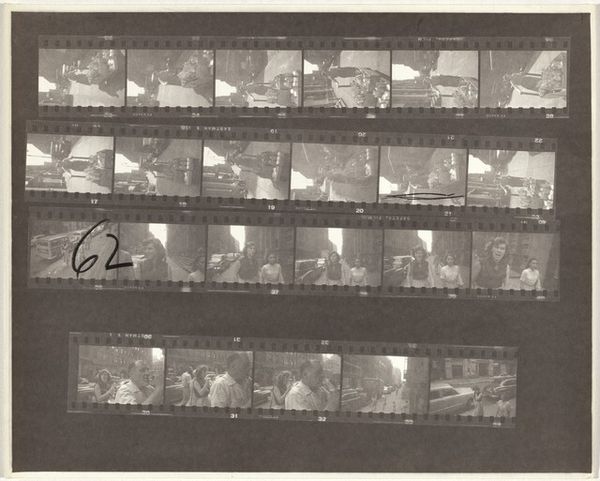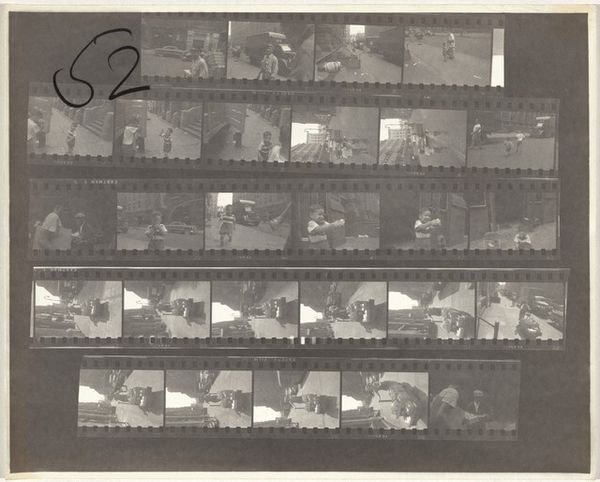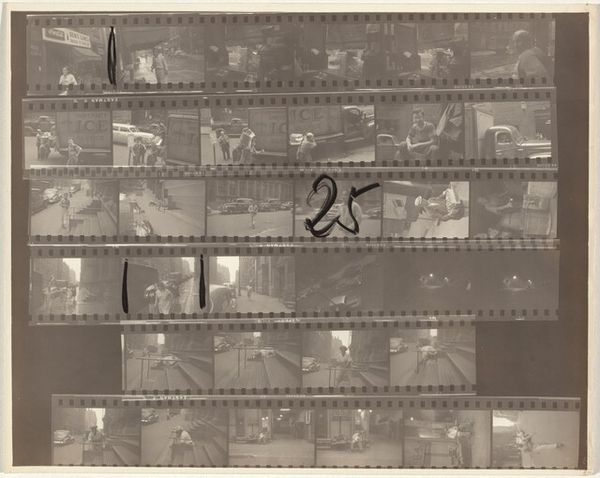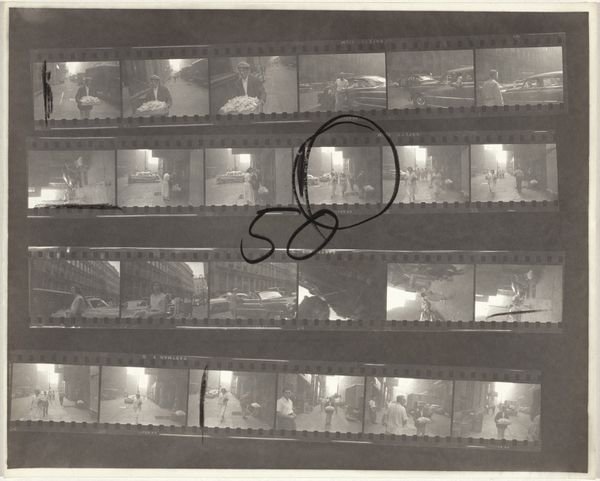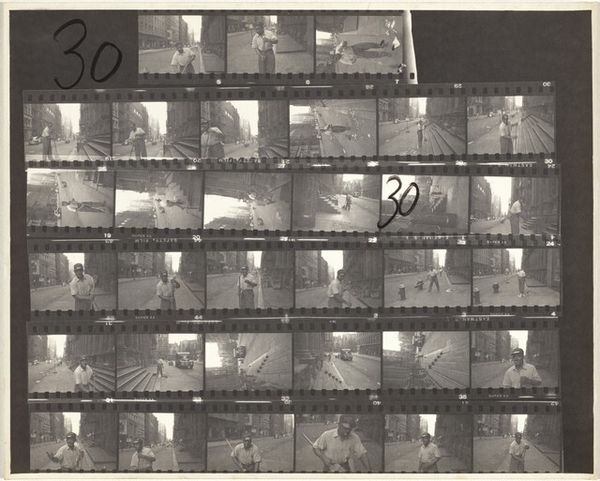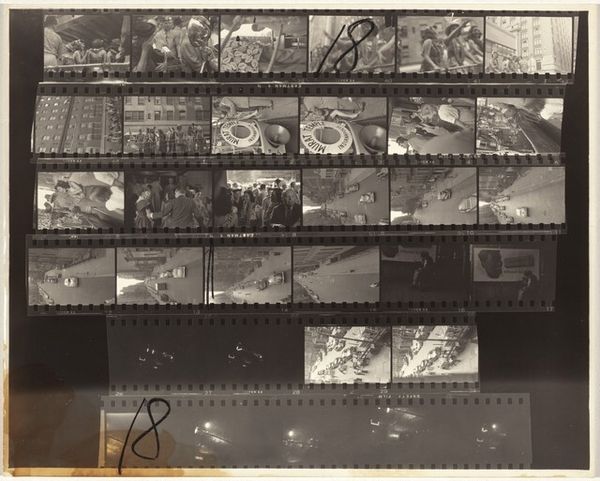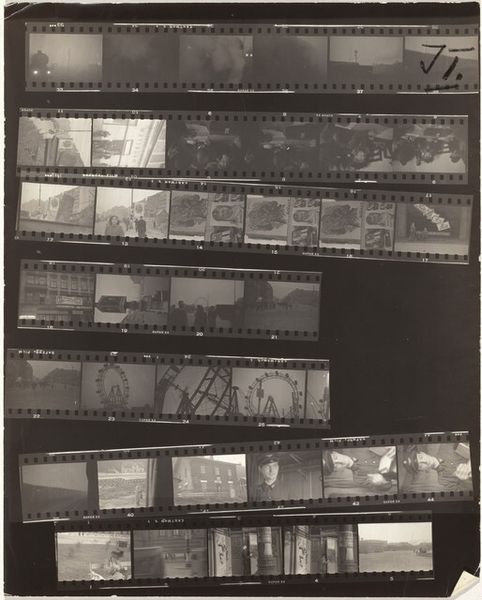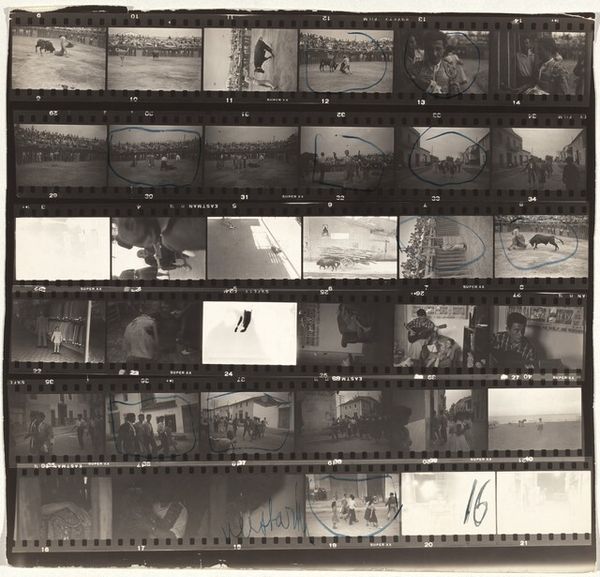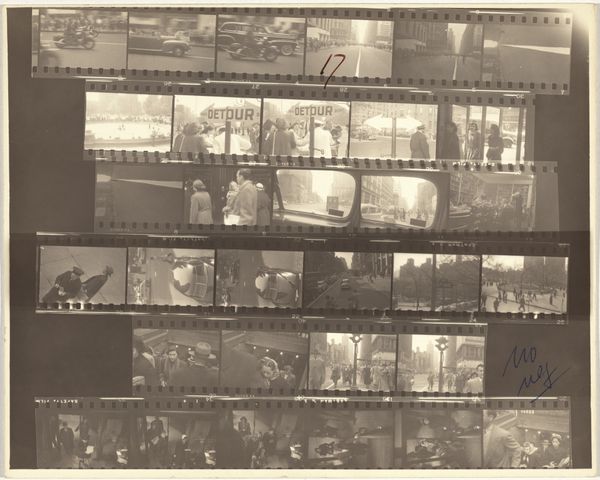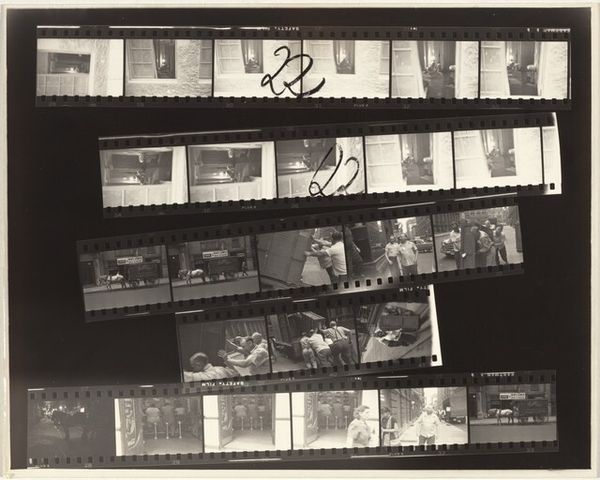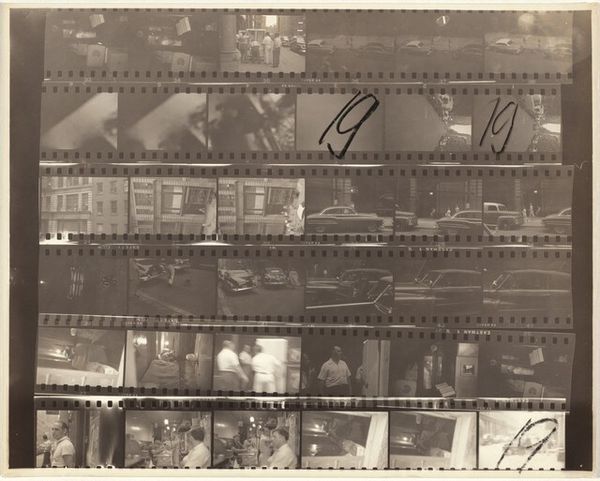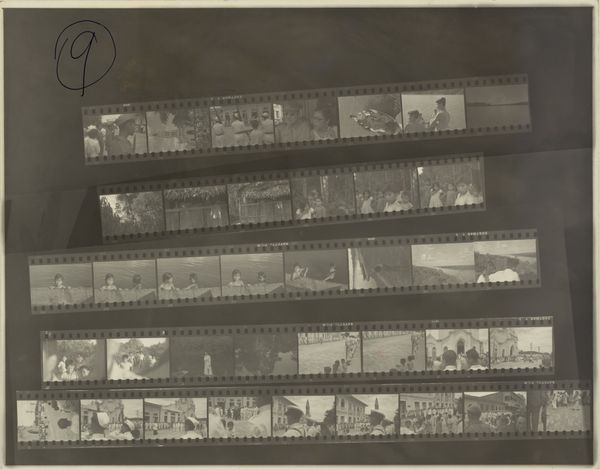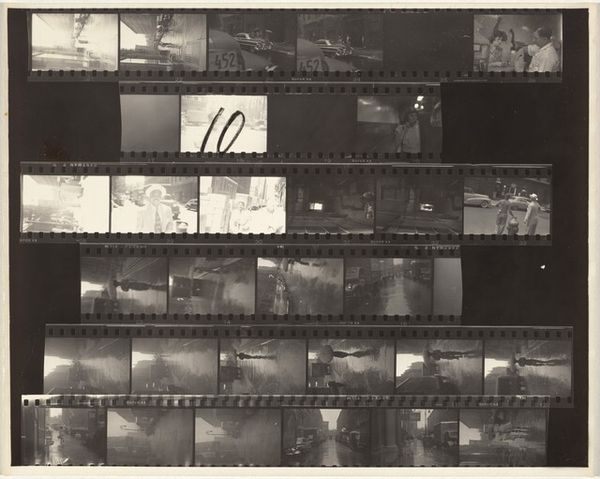
Dimensions: overall: 25.2 x 20.3 cm (9 15/16 x 8 in.)
Copyright: National Gallery of Art: CC0 1.0
Editor: We’re looking at Robert Frank's "11th Street story 46" from 1951, a contact print showing several frames from a roll of film. There's an immediate rawness and intimacy that comes through seeing the whole roll like this. What do you see in its composition and structure? Curator: The work commands attention through its overt structural presentation. We are presented not with a singular image, but a collection. Frank forces us to acknowledge the materiality of photography itself – the celluloid strip, the perforations, even the hand-applied numeral. How does this influence your perception? Editor: It’s almost like we’re seeing the artist's process laid bare. Instead of a polished final product, we're shown the iterations, the subtle changes in each frame. It feels incredibly honest, and makes me focus more on the individual images as moments in time rather than a posed portrait. Curator: Precisely. Observe how Frank employs a limited tonal range – stark contrasts balanced by nuanced grey scales. Light becomes a structural element, shaping forms and delineating space. Note also the recurring motifs – the figure, the street scene, the play of light and shadow. How do these repetitions contribute to the overall meaning? Editor: I think it adds to that sense of a narrative unfolding, even if we don't know the specifics of the story. It's like a visual rhythm that pulls you along. The man's gesture, echoed across multiple frames, implies movement, creating dynamism. Curator: The interplay of light, shadow, and the repetition of form serves to underscore the fragmentary and subjective nature of experience. Does encountering the raw construction of Frank’s photography alter your prior appreciation of it? Editor: It does, quite a bit. Seeing this print makes the final, isolated images seem almost too clean, too presented. There's something compelling in witnessing the whole sequence and appreciating its texture. Curator: Indeed, understanding the artistic choices related to material presentation, framing, and photographic sequencing significantly enriches our interpretative experience. Editor: Absolutely, seeing all the frames gives context and changes the viewing experience a lot!
Comments
No comments
Be the first to comment and join the conversation on the ultimate creative platform.

